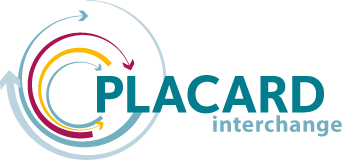Held for the first time in southern Europe, the 4th European Climate Change Adaptation conference (ECCA 2019) took place in Lisbon from 28 to 31 May, 2019. The conference brought together researchers, policymakers and practitioners to discuss recent advances in climate change adaptation (CCA) and disaster risk reduction (DRR) research, policy and practice, and aimed to inspire collective climate action.
Three European Union Horizon 2020 Research and Innovation Framework Programme funded projects shared the organisation and communications for ECCA 2019, led by a team from PLACARD.
While this was a scientific and technical rather than a political conference, we believe the discussions that took place in Lisbon are of critical importance to inform the current efforts and future challenges of climate adaptation and disaster risk reduction. Governments, public agencies, research funders, researchers, non-governmental and private sector actors must see their climate action efforts and ambitions backed up by solid evidence and, of course, intense collaboration between all those involved.
This short overview of ECCA 2019 key messages has been developed by the conference organisers as a summary of those discussions. They do not represent a consensus view of all the 1,200 participants, nor do they represent the official view of the organisations involved.
Time to act…
The consistent theme across the ECCA 2019 plenary sessions was acceptance that the time to act on climate change is now: taking action to reduce greenhouse gas emissions in tandem with adapting to the potential impacts of the climate crisis is paramount. This includes making changes to our lifestyle, in the way we do business, and how our industry and transportation operates.
Increasing pressure from society to implement change, highlighted by movements and networks, for example, is a reminder that nobody will be completely isolated from the effects of the climate crisis. Because of this growing notion, young people are challenging governments to make that change happen quickly.
News in the media must be based on robust and grounded arguments based on solid knowledge and evidence – we have the evidence from science and research, now we need to empower and inform science journalism and advocates to provide clear and factual commentaries and news. Scientists can help by using language that can be understood by citizens.
Leadership and political commitment to action are needed across all levels of governance; with the European Union continuing to invest in climate-related research and preparation for dealing with weather and climate-related hazards, it is crucial that sharing experiences, understanding the knowledge produced and taking action is a reality across all levels of governance; it is only by actively working together that we can limit the progress and impacts of climate change.
The financial sector can play an important role and investors are slowly beginning to better understand climate issues, for example, damage to supply chains or source materials caused by weather and climate-related hazards. In addition, financial institutions are becoming aware that risk reduction and adaptation actions save money in the long-term and that restoring services and infrastructure is costly both fiscally and in lost time.
Finally, the increasingly frequent impacts of climate change on health through heat stress, vector borne diseases, food security, the aftermath of extreme events and the long-term effects on mental health cannot be overstated.
Time to act… is now!
ECCA 2019 featured 96 Science-Practice and Science parallel sessions. These were organised by the scientific and practice communities to present the current state-of-the-art and to inspire action along the six identified ECCA themes.
Act now – communicate better, do more – and the need to “move from common concepts to actions” was clearly a hot topic across science-practice sessions. The nine key main messages are:
Co-production or co-creation of knowledge for adaptation and risk reduction requires a trans-disciplinary approach that recognises values, and integrates different types of knowledge in the adaptation process. Collaborative approaches and engagement must include diverse actors such as individuals, local citizens, private sector and boundary organisations, with government also playing a crucial role.
A debate about where adaptation might end – adapting to what kind of future world? – and loss and damage begin is essential when considering the impacts of high-end climate change.
It is essential that we continue to learn from past and ongoing actions and solutions in order to keep improving portfolios of good practice, particularly taking into account failures as well as successes and innovations.
We need a consistent and flexible approach to common language and concepts in order to ensure knowledge is used appropriately. The jargon and terms used in both climate adaptation and DRR can be similar with slightly different meanings – this can be difficult for decision-makers and practitioners to decode, and potentially undermine messages and action.


